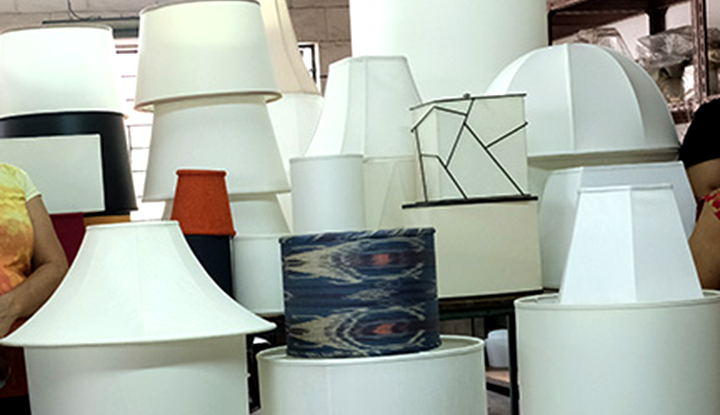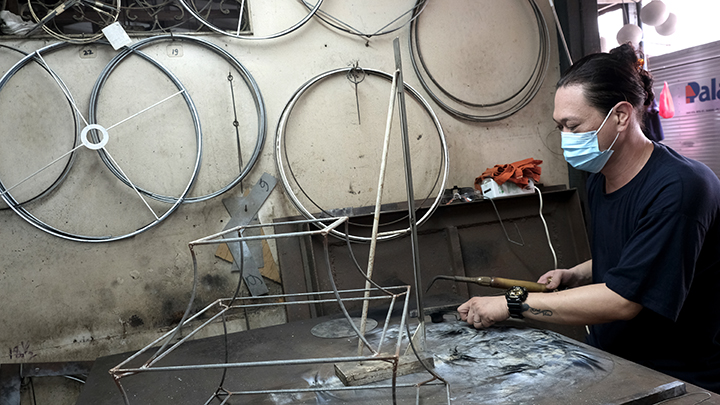
A lady in her mid-twenties visited us at the shop to have her vase converted into a table lamp. She said that she wanted the new shade to be in the same durable material that her late mother’s shade was made from seventeen years before. She had inherited this lamp with its original shade and this has been in constant use all these years. Except for a slight yellowing of the polystyrene lining, it was still decent and serviceable. Seventeen years may have set the bar for the durability of our lamp shades. But we are not surprised by this at all, because our hand sewn shades readily outlast cheaper shades that are only glued together. We have seen this often enough to accept this as gospel.
But why all the fuss about lampshades?
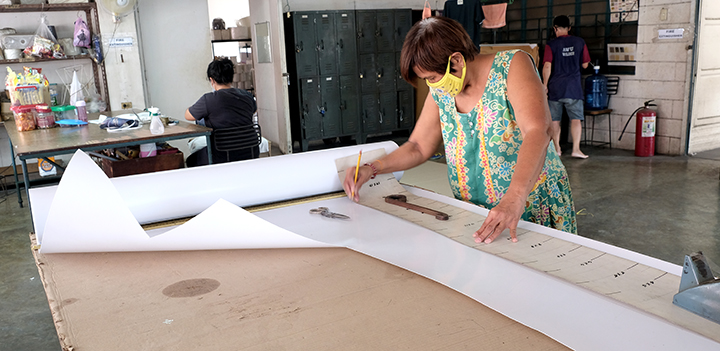
Think of it this way, when one enters a room lit by a chandelier and several portable lamps (table lamps and floor lamps), one’s attention is immediately drawn to the bright spots in the room. Being brightest, one notices the chandelier immediately but the attention then momentarily shifts to the table lamps. So now, regardless of how beautiful or expensive the lamp vase might be, one notices its bright shade first.
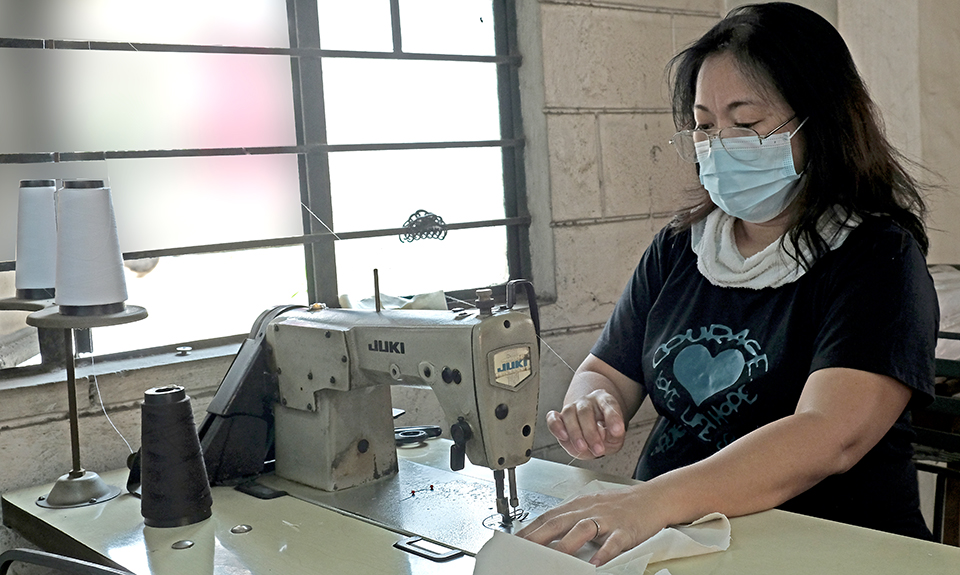
The shade on the lamp is what is first seen in a table lamp. Its shape provides the silhouette that defines the table lamp. Is it a formal lamp, a modern chic lamp, a theme inspired lamp, a general do-it-all conservative lamp, a funky-fun lamp or a conversation piece lamp? Its shade largely determines how the table lamp will be appreciated. Its silhouette (shape and size) is a major determinant of this.
All things considered, it is the shape of the shade that also dates a table lamp. Show us a vase and shade set and we can easily tell you, within a year or two, when the table lamp was made. Unless, the owner deliberately chose a shape that was so plain and simple to withstand the cycles of fashion and current taste, the age of the table lamp is told by the shape and size of its shade.
Flatten that fashion cycle.
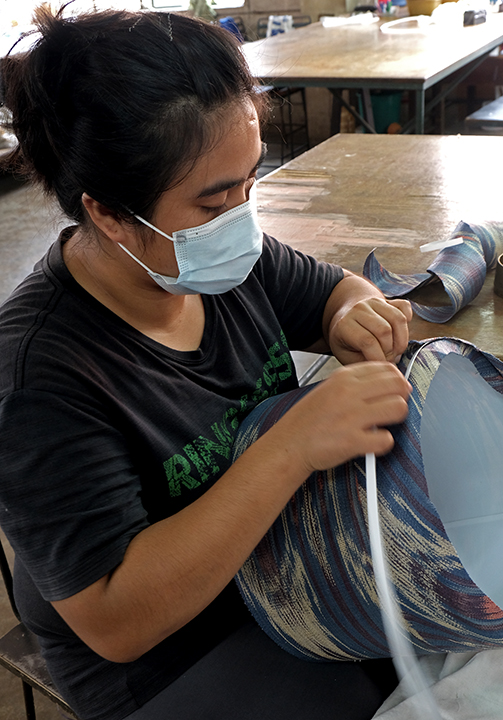
Many come to the shop with old table lamps the owners want restored. The lamps are old and they look their age – not in tune with current interior design preferences. This need is magnified if these lamp owners are renovating their houses at the time. Their table lamps which looked good in the 80’s would no longer be compatible with their new interior’s design. Because of the durability of our shades, some of these owners are even surprised to realize that they have kept their lamps long enough for the next fashion cycle to catch up and make their lamp design current again. However most are mindful of where fashion currently lies and do not wait as long.
Before one trashes the table lamp or commission an extensive renovation of the vase itself, we suggest that we first try a simple and inexpensive way to make that dogged, tired-looking table lamp fashionable again. In current-speak, let us try to “flatten the fashion cycle”. REPLACE THE SHADE. Change its silhouette to conform to what is new and popular, e.g. the old tall cylinder shade to a squat conical shade. Alter its size relative to its vase. Big and bulky shades, once the fashion norm, have given way to smaller, slimmer sizes. Be daring with colors, Shades do not have to be always in white. If one is not daring enough to use a printed fabric cover, then try a soft pastel color that complements the furnishings. Having changed the shade, then the owner can consider improving the vase. From long experience, this will no longer be needed at this point.
It is best to bring the table lamp to the shop so that this may be assessed properly. Design considerations cited above will be discussed. In this regard, different shade silhouettes (shape and size) on the shop floor can be tried on the vase. Actually seeing a similar shade on the vase greatly helps in the purchase decision.
What’s needed to order the right shade?
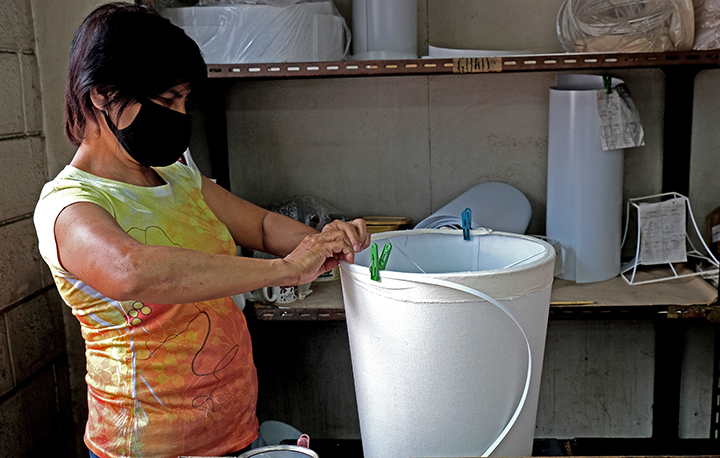
Other minor but needed points to consider: A) How will be the shade be attached to the vase? Will a traditional lamp harp and finial set be used? Or, will the shade be held to the socket with a flange that does away with the need for a harp and finial? B) Will a bottom or top diffuser be needed? A bottom diffuser is sometimes requested by people bothered by the bulb’s glare seen from the bottom of a bedside lamp? There are others who also ask for an upper shade diffuser to mute the shadows thrown up the ceiling by the lamp’s harp or flange spider (the lateral frame rods which connect the shade to the socket)? C) Will a special decorative piping at the shade edges – a particular ribbon or lace – be required? D) Will a specialty cover material be needed? Other than the usual silk, pongee, linen, etc. normally used, certain vase and interior designs may call for raffia, buri, buntal, woven bamboo/rattan, metal brass/copper/aluminum), acrylic, parchment, etc. Will these specialty materials be provided by the customer? All of these different materials have their individual pros and cons with respect to feasibility of use as cover for a specific shade design, translucence, durability and maintenance. D) Based on the contemplated lamping, will the shape and size of the shade be safe – not a fire or electrical hazard. Yes, there are a lot of these small things to consider. But worry not, you will be guided closely. This is the reason a personal visit to the shop is quite helpful.
Give the lamp shade the importance it deserves. It may turn up to be the one furnishing you will enjoy or rue for the next seventeen years.
Achilles’ heel of shade longevity.
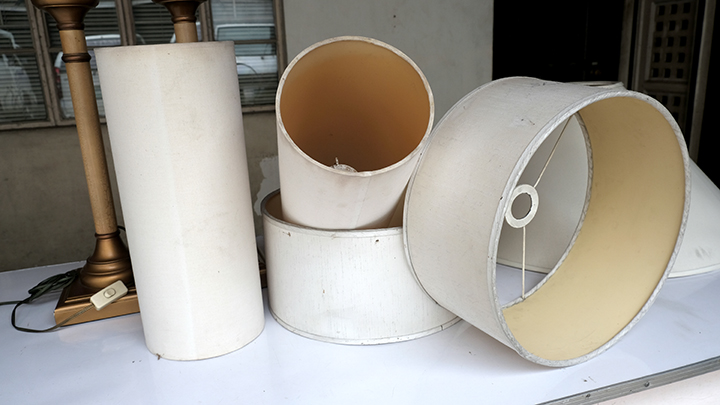
This is how a 13-16 year old shade looks like. We often receive shades in this state to recover.
Oftentimes when we tear the fabric from its wire frame, the frame is so disfigured that it would no longer be worth the trouble to straighten and reuse it. So the recover order actually becomes the fabrication of a new shade altogether.
You will note that after all these years of use, the fabric has stood up well. If not for the yellowed polystyrene liner, the fabric could just have been washed with mild detergent and water to make it look new. This is the benefit of handsewing. Not like the glued shade, it will not come apart with washing and sun drying.
The polystyrene lining, being plastic, is sensitive to the heat and UV rays given off by the bulb. This causes it to discolor and become brittle. We have still to find a plastic liner that will not deteriorate this way. In the meantime, the polystyrene lining remains as the Achilles’ heel of the fabric shade.

